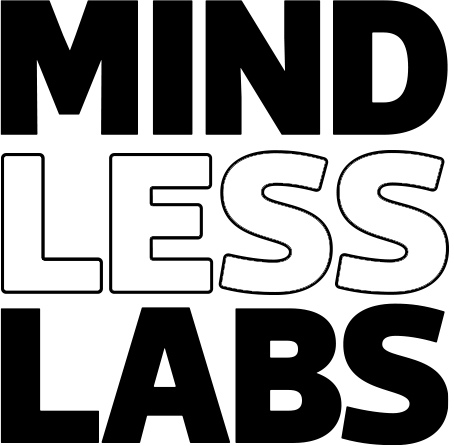Feeling stuck with traditional mental health approaches that only address half the picture? Our posts show how combining ancient wisdom with modern science can create breakthrough results for your mental well-being. You’ll discover practical alternatives like sound therapy that can calm your nervous system and natural remedies that support your body while healing your mind. We break down mysterious concepts like energy work into simple practices you can start today—no crystals required (unless you want them).
June marks Post-Traumatic Stress Disorder (PTSD) Awareness Month, a time dedicated to increasing understanding of PTSD and its profound effects on individuals. While many are familiar with PTSD, it is essential to distinguish between its two forms: simple PTSD and complex PTSD (C-PTSD). Understanding these differences can aid in appropriate treatment approaches and foster compassion for those affected.
Simple PTSD vs. Complex PTSD
Simple PTSD typically arises from a single traumatic event or a series of events that are relatively short-lived. This may include incidents such as accidents, natural disasters, or single episodes of violence. Individuals with simple PTSD may experience symptoms such as:
– Intrusive memories of the trauma
– Nightmares
– Avoidance of reminders of the trauma
– Heightened anxiety and emotional distress
– Difficulty sleeping
The symptoms can significantly affect daily functioning but often respond well to treatments.
Complex PTSD, on the other hand, results from prolonged or repetitive exposure to traumatic events, especially in contexts where escape is difficult, such as chronic abuse, domestic violence, or living in a war zone. The symptoms of C-PTSD can be more pervasive and may include:
– All symptoms of simple PTSD
– Difficulties in emotional regulation
– Feelings of hopelessness and persistent negative emotions
– Problems with interpersonal relationships
– Distorted perception of the perpetrator and oneself
– Dissociation or fragmented sense of self
The complexity of C-PTSD often necessitates a more nuanced therapeutic approach.
Evidence-Based Treatments for PTSD
A variety of evidence-based treatments have been developed for PTSD, both simple and complex. Some of the most widely recognized and effective approaches include:
1. Cognitive Behavioral Therapy (CBT): This is one of the most effective treatments for PTSD. It involves helping patients understand and change their thoughts and behaviors related to the trauma.
2. Prolonged Exposure Therapy (PE): A form of CBT, PE helps patients confront their fears by gradually exposing them to trauma-related memories and situations in a safe environment.
3. Eye Movement Desensitization and Reprocessing (EMDR): EMDR is a specialized therapy that helps individuals process and integrate traumatic memories through guided eye movements or other forms of bilateral stimulation.
4. Medication: Antidepressants, particularly selective serotonin reuptake inhibitors (SSRIs), are commonly prescribed to help alleviate symptoms. Other medications, such as anti-anxiety drugs and sleep aids, may also be beneficial.
5. Trauma-Focused Cognitive Behavioral Therapy (TF-CBT): This is an adaptation of CBT specifically designed for children and adolescents with PTSD. It involves the child and their caregivers and focuses on addressing trauma-related thoughts and feelings.
New and Emerging Treatments
In recent years, several new and emerging treatments have shown promise in effectively addressing both simple and complex PTSD:
1. Neurofeedback: This technique involves training individuals to regulate their brain activity through real-time feedback. Preliminary studies suggest it may help alleviate PTSD symptoms by promoting self-regulation of emotional responses.
2. Virtual Reality Exposure Therapy (VRET): Utilizing virtual reality technology, VRET immerses patients in a controlled environment where they can confront trauma-related stimuli in a safe setting. Early results indicate it can be particularly effective for veterans and individuals with combat-related PTSD.
3. Psychedelic-Assisted Therapy: Emerging research suggests that substances like MDMA (commonly known as ecstasy) may enhance the therapeutic process when combined with traditional psychotherapy. Studies have shown significant reductions in PTSD symptoms when MDMA is used under professional guidance.
4. Mindfulness-Based Stress Reduction (MBSR): This program incorporates mindfulness meditation and yoga to help individuals become more aware of their thoughts and feelings, fostering a sense of control and reducing anxiety.
5. Somatic Experiencing: This body-oriented approach focuses on the physiological effects of trauma. Practitioners guide individuals in releasing pent-up energy caused by traumatic experiences, which can lead to symptom relief.
In closing:
Understanding the differences between simple PTSD and complex PTSD is critical for effective treatment and support. With a range of evidence-based therapies and emerging treatments, individuals suffering from PTSD can find hope and healing. Awareness and education, particularly during PTSD Awareness Month, play a crucial role in fostering understanding, empathy, and support for those affected by this challenging condition. As research continues to evolve, the future of PTSD treatment looks promising, offering new avenues for recovery and resilience.






